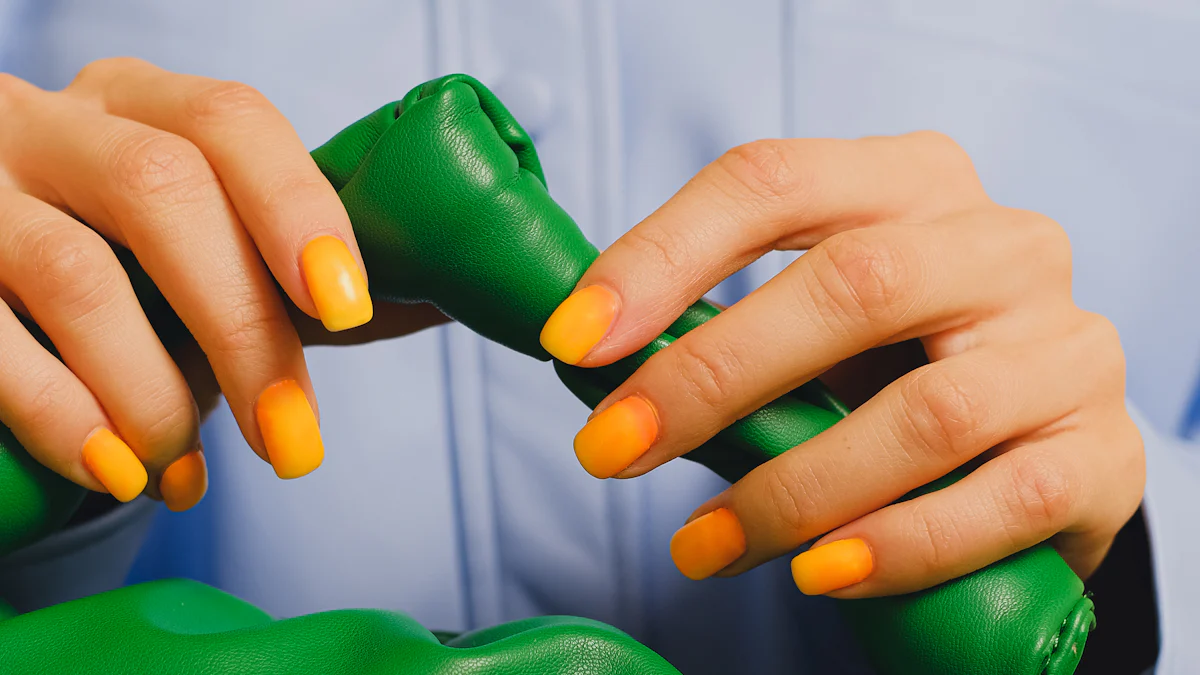Taking care of your eco-friendly jacket isn’t just about keeping it looking great. It’s about making it last longer and reducing waste. When you maintain eco friendly jackets properly, you’re not only helping the planet but also saving money. Why replace something when a little care can make it last for years?
Key Takeaways
- Knowing your jacket’s fabric helps you care for it. Each material needs special cleaning to prevent harm.
- Check the care labels carefully. They tell you how to clean, dry, and keep your jacket in good shape.
- Let your jacket air dry instead of using a dryer. This keeps the fabric strong and uses less energy, helping you and the Earth.
Understanding Your Eco-Friendly Jacket
Importance of Knowing Your Jacket’s Material
Do you know what your eco-friendly jacket is made of? Understanding the material is the first step to taking care of it properly. Different fabrics need different care. For example, jackets made from organic cotton or hemp are durable but may shrink if washed in hot water. Recycled polyester, on the other hand, can handle more wear but might release microplastics during washing.
When you know the material, you can avoid common mistakes. Some eco-friendly fabrics, like Tencel or bamboo, are sensitive to harsh detergents. Others, like wool, need gentle handling to prevent damage. Taking a few minutes to check the fabric type can save you from accidentally ruining your jacket. Plus, it helps you make better choices when buying new ones.
Decoding Care Labels for Proper Maintenance
Care labels are like a cheat sheet for your jacket. They tell you exactly how to clean and maintain it. But let’s be honest—how often do you actually read them? If you’re skipping this step, you might be shortening your jacket’s lifespan.
Look for symbols that show washing temperature, drying methods, and ironing instructions. For instance, a handwash symbol means you should avoid the washing machine. A crossed-out tumble dryer symbol? That’s your cue to air dry. These small details make a big difference in keeping your eco-friendly jacket in top shape.
If the label confuses you, don’t worry. A quick online search can help you decode those symbols. Once you understand them, you’ll feel more confident about caring for your jacket the right way.
Eco-Friendly Cleaning Practices

Washing Frequency for Longevity
How often should you wash your eco-friendly jacket? The answer depends on how much you wear it and the activities you do. Overwashing can wear out the fabric and shorten its lifespan. If you’re just wearing your jacket for casual outings, you can go weeks or even months without washing it. Spot cleaning is often enough to keep it fresh.
For outdoor adventures or heavy use, a wash every few weeks might be necessary. Always check for dirt, stains, or odors before deciding. Remember, less washing means less water and energy use, which is better for the planet.
Choosing Eco-Friendly Detergents
Not all detergents are created equal. Many contain harsh chemicals that can damage your jacket’s material and harm the environment. Look for eco-friendly detergents made from plant-based ingredients. These are gentle on your jacket and biodegradable, so they won’t pollute waterways.
You can also try making your own detergent at home. A simple mix of baking soda and castile soap works wonders. It’s a budget-friendly and sustainable option. Whatever you choose, avoid fabric softeners. They can coat the fibers and reduce your jacket’s breathability.
Washing Techniques to Protect Your Jacket
Washing your eco-friendly jacket the right way makes a big difference. Use cold water to prevent shrinking and preserve the fabric’s quality. Turn the jacket inside out to protect its outer layer. If you’re using a washing machine, choose a gentle cycle.
For delicate materials, handwashing is your best bet. Fill a basin with cold water, add detergent, and gently agitate the jacket. Rinse thoroughly and avoid wringing it out. Instead, press it between towels to remove excess water. These small steps can keep your jacket looking great for years.
Drying and Storing Your Eco-Friendly Jacket

Benefits of Air Drying Over Tumble Drying
Air drying is one of the best ways to care for your eco-friendly jacket. It’s gentle on the fabric and helps maintain its shape and texture. Tumble drying, on the other hand, can be harsh. The high heat and constant tumbling can weaken fibers, especially in jackets made from natural or recycled materials.
When you air dry, you’re also saving energy. That’s a win for the planet and your wallet! To air dry your jacket, hang it on a sturdy hanger or lay it flat on a clean towel. Make sure it’s in a well-ventilated area, away from direct sunlight. Sunlight can fade colors and damage certain fabrics over time. By taking this simple step, you’ll keep your jacket looking fresh and lasting longer.
Proper Storage to Prevent Damage
Storing your eco-friendly jacket the right way is just as important as cleaning it. A poorly stored jacket can lose its shape, develop wrinkles, or even attract pests. Always make sure your jacket is completely dry before putting it away. Storing a damp jacket can lead to mold or mildew, which is tough to remove.
Use a padded hanger to help your jacket keep its shape. If you’re storing it for a long time, consider using a breathable garment bag. Avoid plastic covers—they trap moisture and can harm the fabric. For jackets made from delicate materials, folding them with acid-free tissue paper can prevent creases. Keep your jacket in a cool, dry place, away from direct sunlight or heat sources. These small steps can make a big difference in preserving your jacket’s quality.
Repair and Longevity Tips
DIY Repairs for Common Issues
Small issues like loose threads, missing buttons, or tiny tears don’t mean your jacket is done for. You can fix these problems yourself with a little effort. Got a loose thread? Snip it off carefully instead of pulling it. Missing a button? Grab a needle and thread, and sew on a replacement. You can even reuse buttons from old clothes to keep things sustainable.
For small tears, fabric glue or iron-on patches work wonders. Just make sure the patch matches your jacket’s material. If you’re feeling creative, you can even use decorative patches to give your jacket a unique look. These quick fixes save you money and keep your eco-friendly jacket in great shape.
When to Seek Professional Help
Sometimes, a repair is too tricky to handle on your own. For larger tears, broken zippers, or damaged seams, it’s best to visit a professional tailor. They have the tools and skills to restore your jacket without causing further damage. It’s worth the investment, especially for high-quality or sentimental pieces.
If your jacket has a warranty, check if repairs are covered. Many sustainable brands offer repair services to extend the life of their products. This not only saves you money but also supports the brand’s eco-friendly mission.
Preventing Wear and Tear
Prevention is always better than repair. Treat your jacket with care to avoid unnecessary damage. Avoid overloading pockets, as this can strain the seams. When wearing backpacks, watch out for friction that might wear down the fabric. Rotate your jackets to give each one a break and reduce overall wear.
Regularly inspect your jacket for small issues before they become big problems. A quick stitch or patch now can save you from a costly repair later. By taking these steps, you’ll ensure your eco-friendly jacket stays in top condition for years to come.
Sustainable Practices for Jacket Care
Using Microplastic Laundry Bags
Did you know your washing routine could release tiny plastic particles into the water? These microplastics come from synthetic fabrics like recycled polyester. They’re harmful to marine life and the environment. You can stop this by using a microplastic laundry bag. It’s a simple tool that traps those pesky particles during washing. Afterward, you can safely dispose of them in the trash.
Using these bags doesn’t just protect the planet. It also keeps your jacket’s fibers intact, helping it last longer. They’re easy to use—just place your jacket inside the bag before tossing it in the washer. It’s a small step with a big impact.
Recycling or Donating Old Jackets
When your jacket reaches the end of its life, don’t toss it in the trash. Recycling or donating it is a much better option. Many organizations accept used jackets, even if they’re slightly damaged. They repair and redistribute them to those in need. It’s a great way to give your jacket a second life.
If recycling is your choice, check for local textile recycling programs. Some brands even offer take-back initiatives. They’ll recycle your old jacket into new products. This keeps waste out of landfills and supports a circular economy.
Supporting Sustainable Brands
Choosing sustainable brands makes a difference. These companies prioritize eco-friendly practices, from sourcing materials to manufacturing. By supporting them, you’re encouraging more ethical production methods. Look for brands that offer repair services or use recycled materials in their products.
When you buy from these brands, you’re investing in quality. A well-made eco-friendly jacket lasts longer and reduces the need for frequent replacements. It’s a win for your wallet and the planet.
Caring for your eco-friendly jacket doesn’t have to be complicated. By cleaning it properly, storing it carefully, and fixing small issues early, you can make it last for years. These simple steps not only save you money but also help the planet. Why not start today? Your jacket—and the Earth—will thank you.
FAQ
How do I remove stubborn stains from my eco-friendly jacket?
For tough stains, use a mix of baking soda and water. Gently rub it on the stain, then rinse. Avoid harsh chemicals—they can damage the fabric.
Can I iron my eco-friendly jacket?
Check the care label first. If ironing is allowed, use a low heat setting. Place a cloth between the iron and jacket to avoid direct contact.
What should I do if my jacket smells musty?
Air it out in a well-ventilated area. For extra freshness, sprinkle baking soda inside and let it sit overnight. Shake it out the next day.
Post time: Feb-06-2025

